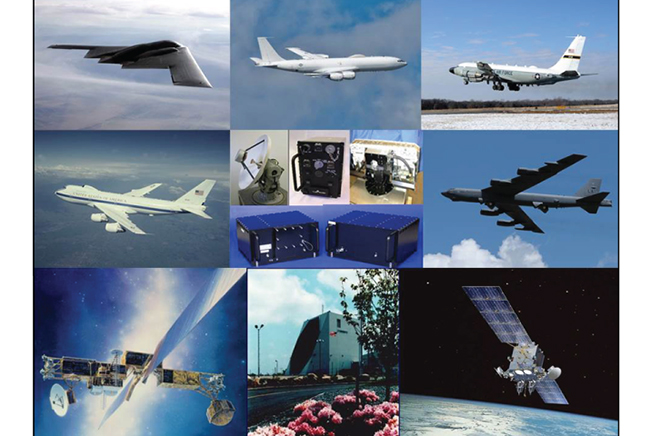
A month after announcing initial operational capability, the director of US Strategic Command's new Nuclear Command, Control, and Communications Enterprise Center says it has suggested possible schedule and capability changes for certain NC3 modernization programs, though she declined to say which programs might be affected. GAO composite photo.
A new Nuclear Command, Control, and Communications Enterprise Center at US Strategic Command has begun suggesting changes to make future Air Force and Navy NC3 systems more coordinated and capable, the center’s director tells Air Force Magazine.
In a recent interview, Elizabeth Durham-Ruiz said the NC3 Enterprise Center “identified some opportunities for alignment” between certain programs, but she declined to provide details on how those might change.
The Office of the Secretary of Defense is reviewing some of those potential edits, Durham-Ruiz said. OSD did not respond to requests for comment.
“We were able to, through our Office of the Secretary of Defense teammates, look at the portfolio of programs and have a good conversation about how we synchronize those programs so that they field at the right time, so there are no gaps in capability going forward,” she said. “Some of those opportunities for alignment, you might imagine, involve fielding things on a different time frame or making sure we have [the right] capabilities.”
The center is also considering ways to make the most of current NC3 systems and to ensure their continued security before they are replaced to comply with a new generation of nuclear weapons. For example, STRATCOM is trying out a new process for reporting and fixing system deficiencies.
“Some of the challenges that I’ve seen in the past are really a reluctance to fix some of those … shortfalls, just because of the fact that the systems are antiquated, the funds are hard to get, and it’s really kind of difficult to describe what NC3 is,” Durham-Ruiz said. “Within the last few months that we’ve really had an NC3 Enterprise Center, we’ve been much more successful with breaking down those stovepipes with the services and OSD and getting people to understand what the shortfalls are.”
Other shifts involve interagency collaboration, such as moving an engineering team from the Defense Information Systems Agency to the NEC.
The center’s key mandate is to build a common requirements document for modern NC3 technologies that will be used by the services as they gradually replace systems. That document is still a work in progress, and Durham-Ruiz said it’s too early to tell when it might be done.
As the Air Force’s B-21 bomber, Ground-Based Strategic Deterrent, and Long-Range Standoff weapon start entering operations within the next decade, the military’s complementary inventory (of which the Air Force owns more than 60 systems) of launch control and unified command centers, wing command posts, aircraft like Air Force One and the E-4 Nightwatch, satellites, radios, and more must be ready in time to work with the new nuclear triad.
Certain legacy systems have more “logistical challenges” than others, Durham-Ruiz said, and those are already being upgraded so they can bridge to the next generation.
“We’re just right now defining the architecture and then after the architecture, the blueprint, is defined, … we look at the technologies that are available to support that architecture and to ensure the architecture also supports the new weapon systems,” she said. “We’re designing an NC3 enterprise architecture that’s flexible and able to accommodate new technologies and new threats as they change for decades into the future.”
Former Defense Secretary Jim Mattis last year ordered STRATCOM boss Gen. John Hyten to become the chief authority in charge of NC3 management, integration, and requirements. The center now acts as a conduit between high-level Pentagon organizations, the combatant command, and service-level groups like the Air Force’s own NC3 Center and its NC3 Integration Directorate.
After announcing the NEC was up and running with early-stage work in April, Durham-Ruiz said the center needs to further solidify its organizational structure, processes, and funding to declare full operational capability.
